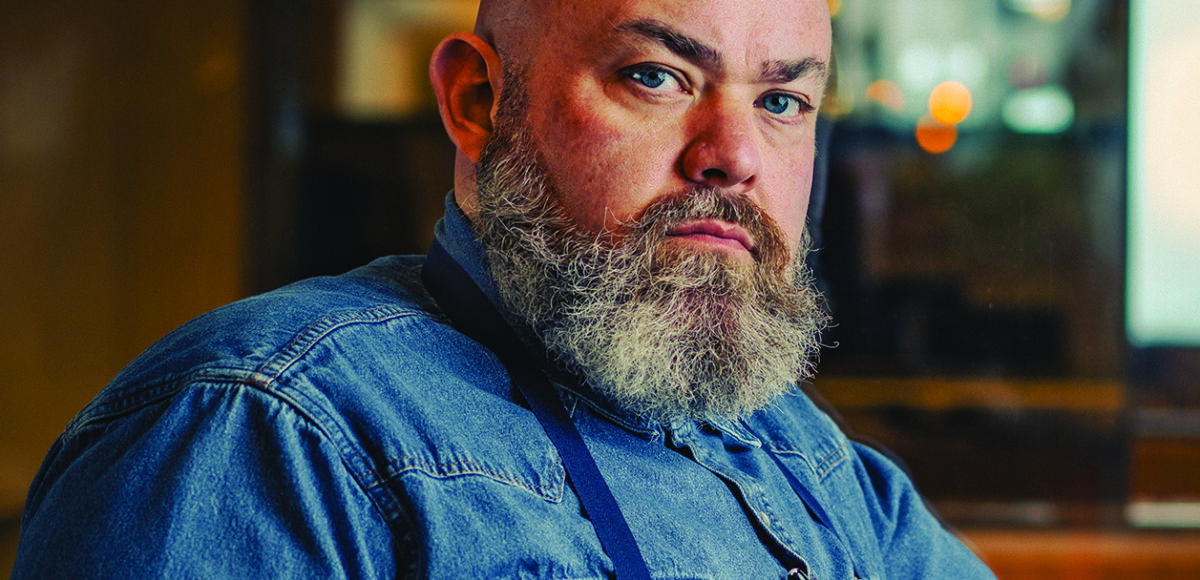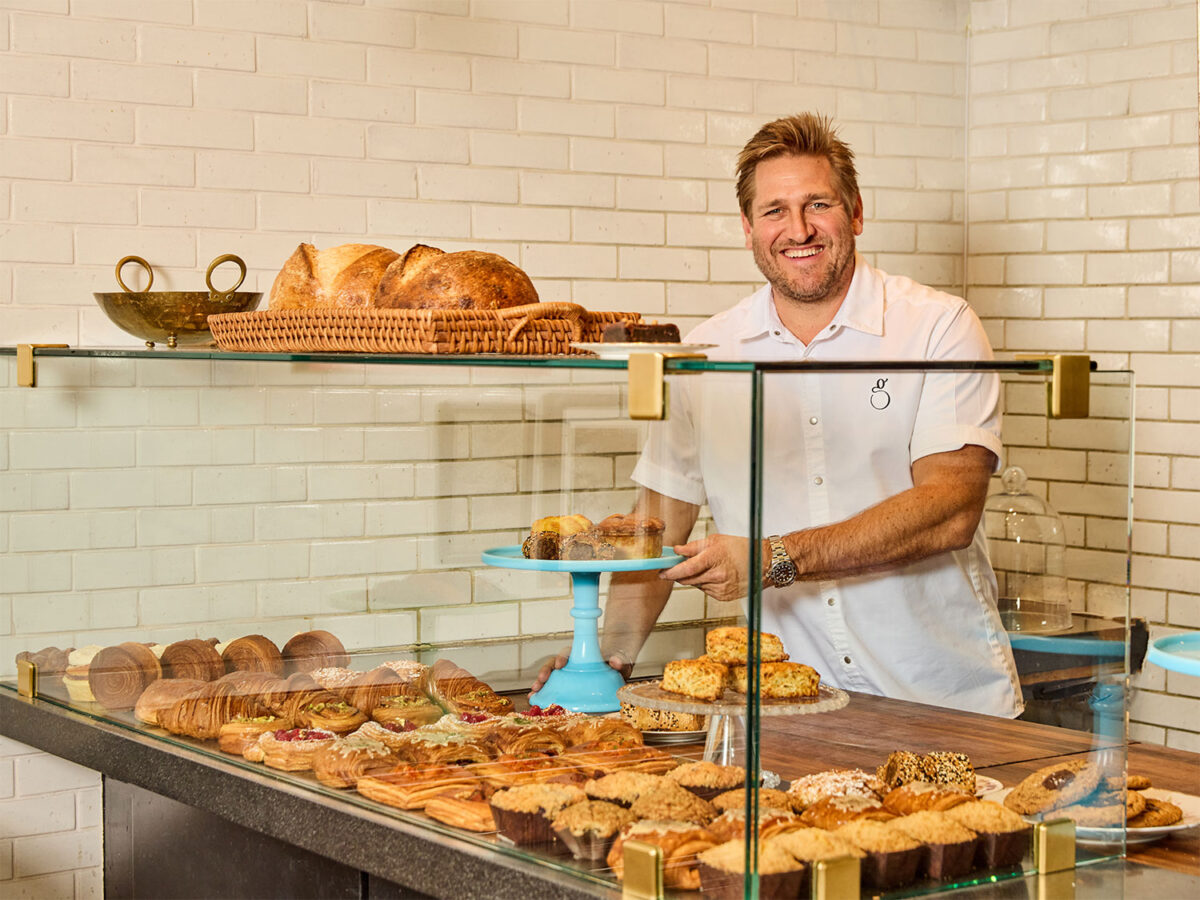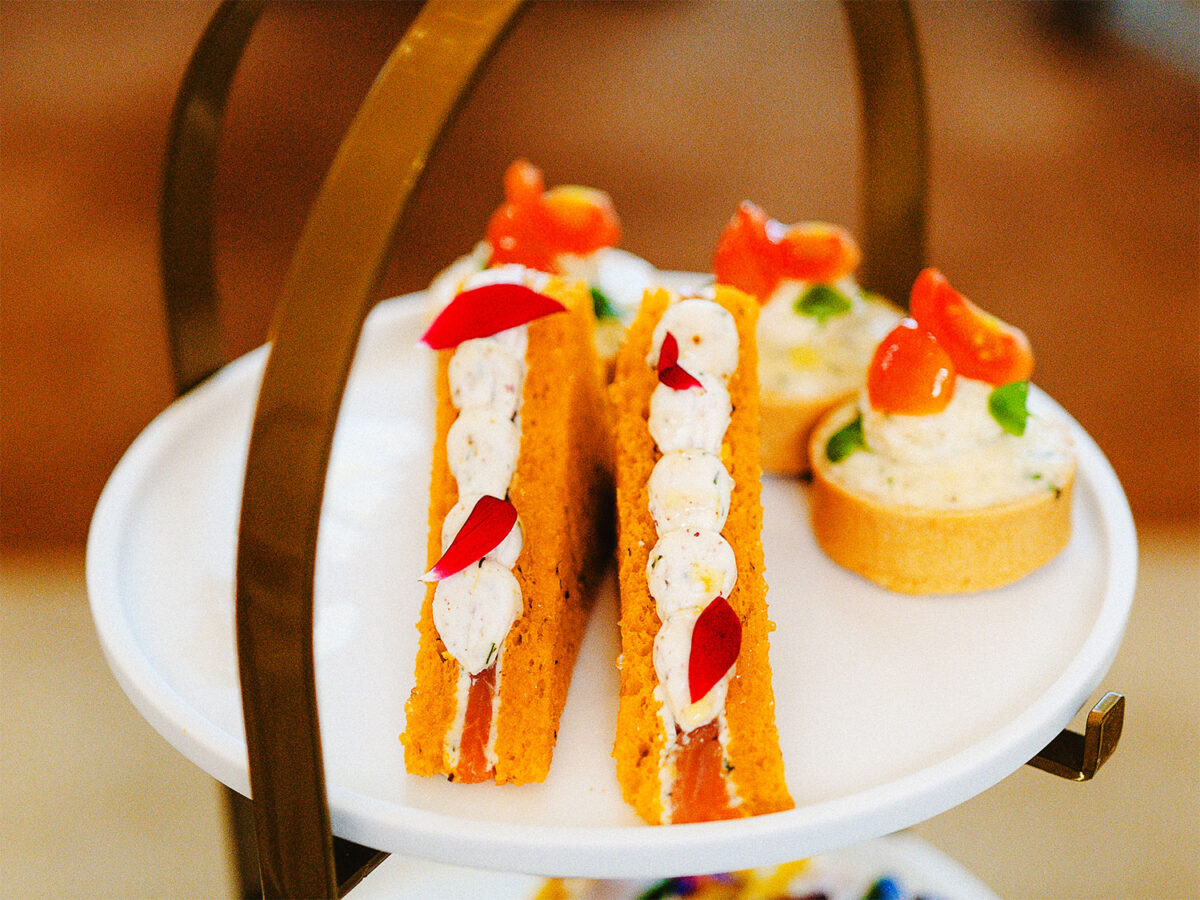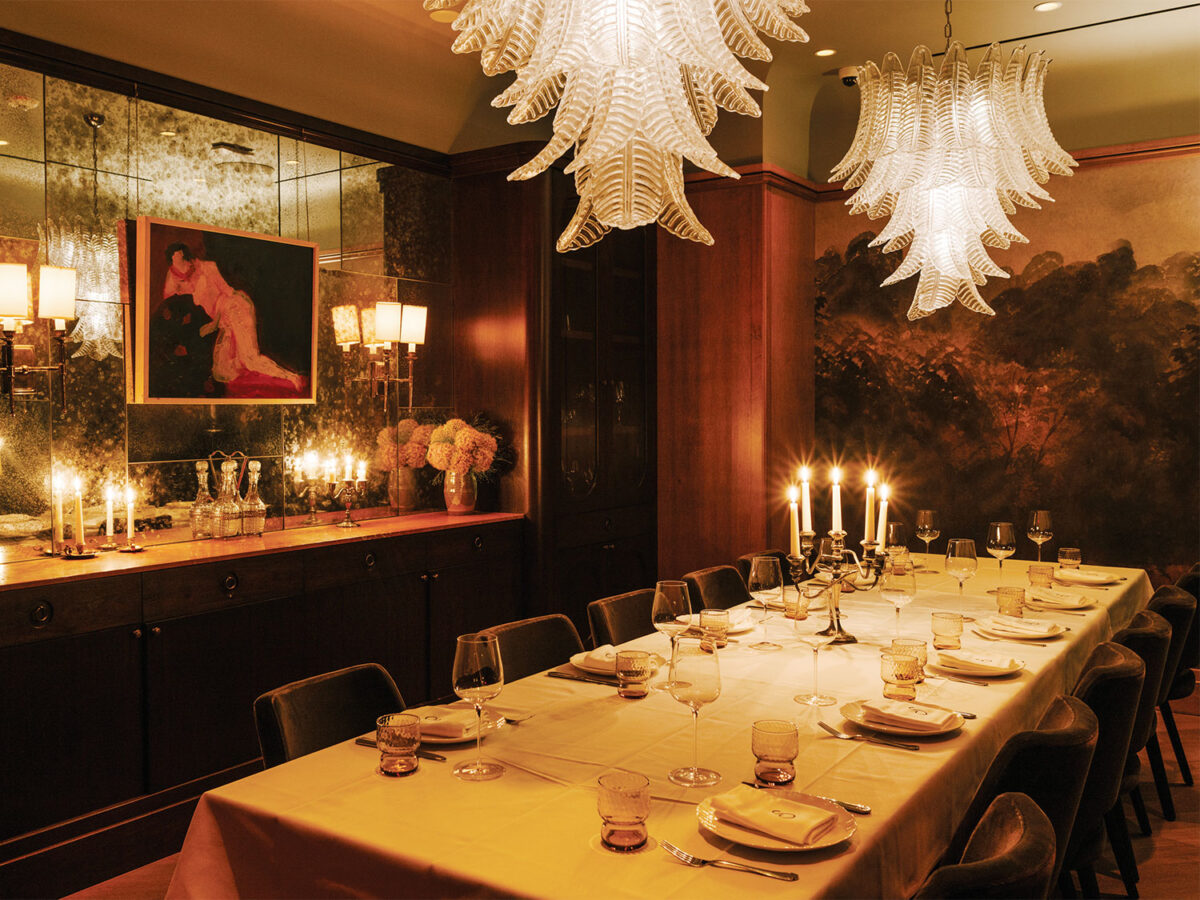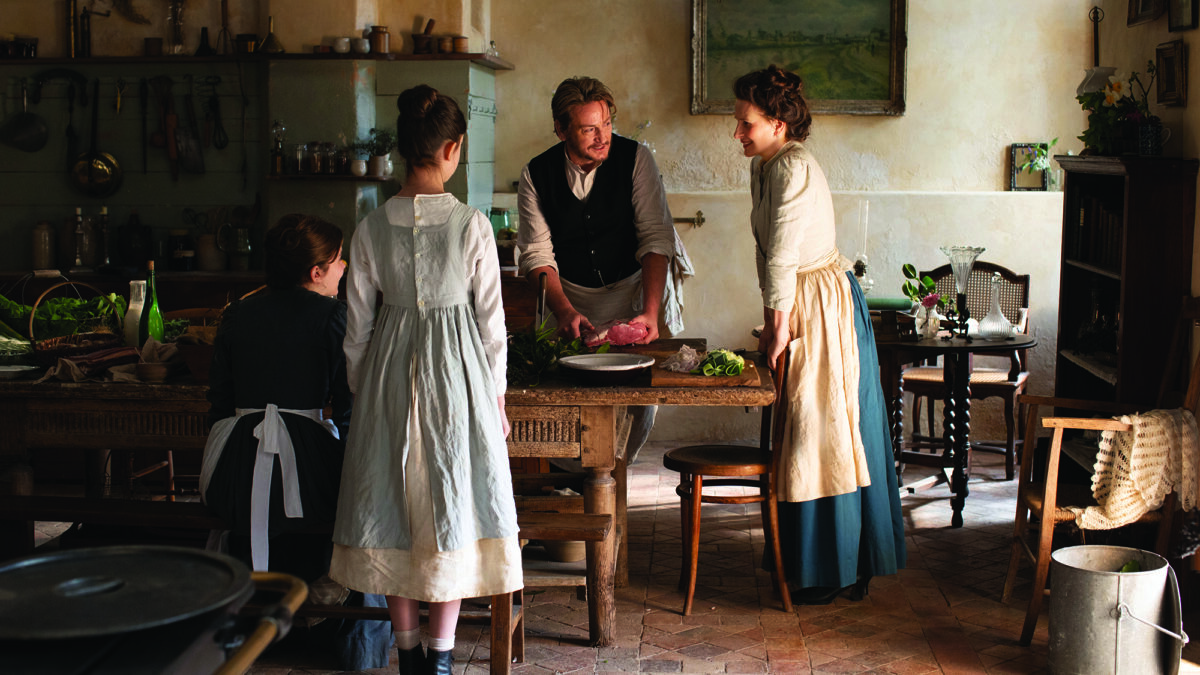There is a scene in the 2020 docuseries, “Shape of Pasta,” in which chef Evan Funke travels to a small village in Calabria to meet a local chef. She is said to be the only person in Italy who still makes an obscure pasta known as “strangulet.” When Funke finds the jovial, white-haired woman named Cristina, she is thrilled to teach her famous visitor how to make the striated shape.
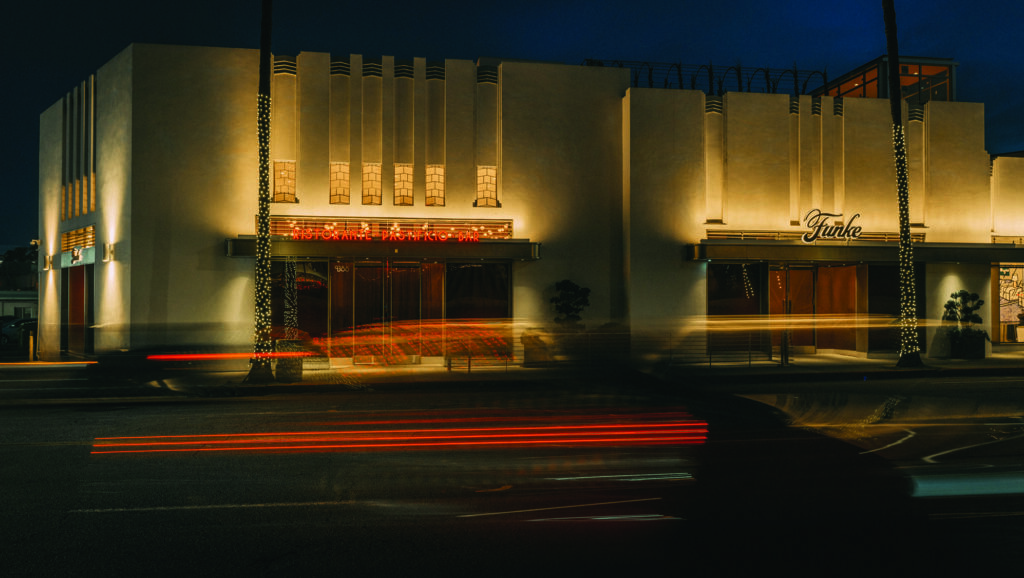
Strangulet, Funke learns, is made with a stringed wooden instrument called a “pettine,” and the one Cristina uses is generations old. Later, he is overcome with emotion as she hands the heirloom to him as a gift with the entreaty to “take it to California!”
Fast forward a few years and a world away to Beverly Hills, where Funke’s eponymous restaurant debuted to great fanfare in May 2023. Located in an art deco jewel box on South Santa Monica Boulevard and Canon Drive, it remains the hottest ticket in town.
Warhols and Basquiats grace the walls, but humble tools of the trade hold a higher significance in the space. Inside the imposing glass and steel “pasta laboratorio” in the main dining room, several wooden implements hang on the walls. Among them is a pettine, like the one Funke first encountered in Calabria.
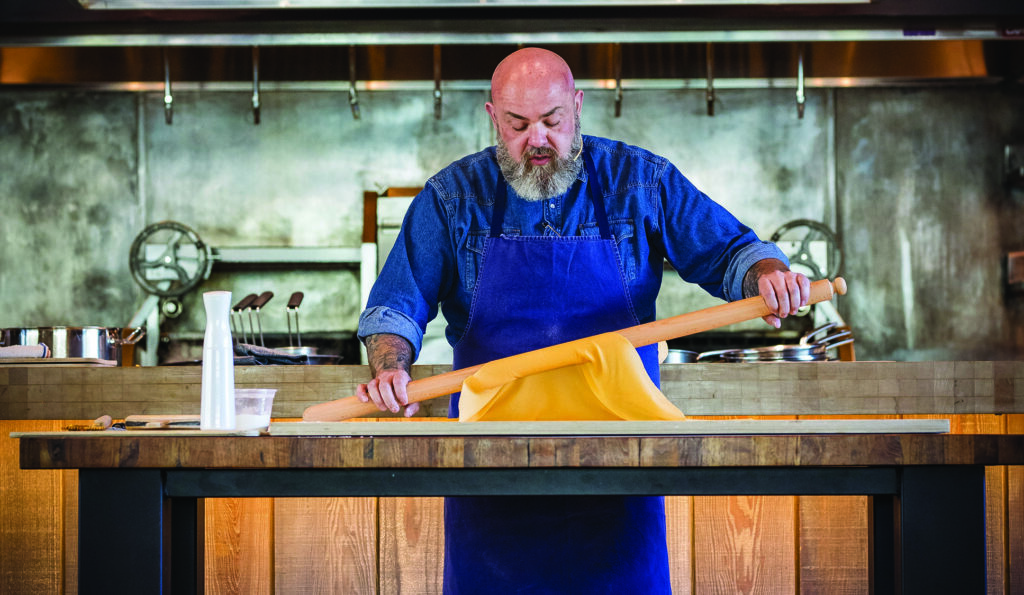
“That’s not the real one. The real one is in a safe,” Funke noted when I met with him for an interview earlier this year.
And that, in a nutshell, exemplifies a key theme of Evan Funke’s remarkable career.
At 46, the two-time James Beard nominee is one of the most celebrated chefs in Southern California, if not the country. Yet, his role as chef-owner comes across as but an adjunct to his true passion, which is to be a culinary anthropologist and historian.
Standing intently beside me (as he did throughout our “sit down” interview at the restaurant), Funke doesn’t disagree with that assessment. He has made it his life’s work to discover, teach and share the art of handmade pasta in its hundreds of iterations.
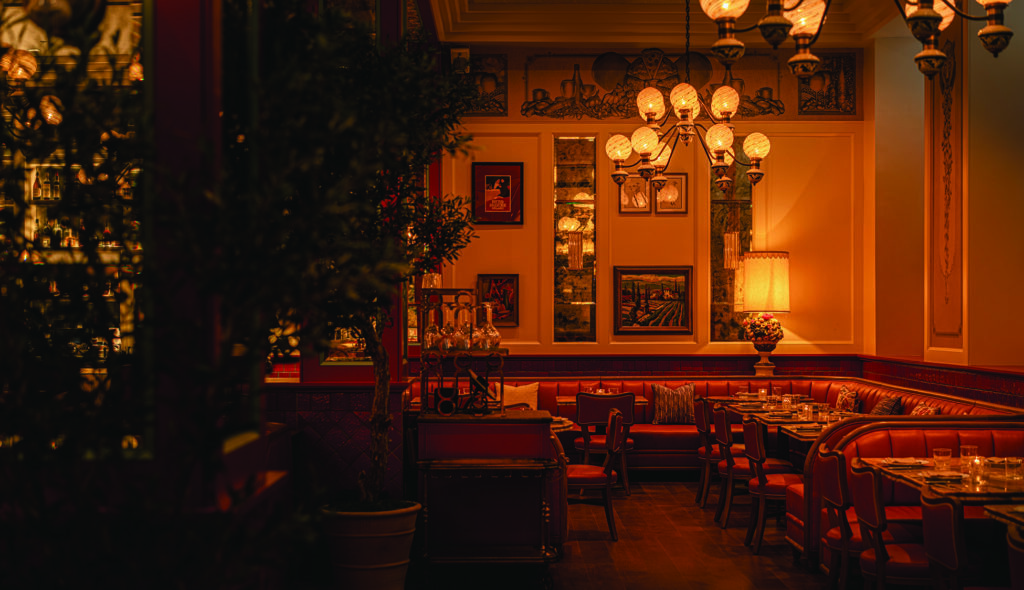
“I am a student of this craft and of the history of pasta making. And, not necessarily just for the technical knowledge, but for the historical knowledge and the connection between the people who have made these shapes since a very young age and continue to do it,” he says.
Those “people” tend to be women, and Funke is an unabashed feminist in lauding the importance of the Italian “nonnas” (grandmothers) who hold the keys to the dying art.
“If you trace each one of those shapes back, each one of them has an ancestral shape that was at one time made in the home by a woman. And the ingenuity, the creativity was driven by women in the home working with their hands with very meager ingredients: flour and water. All the shapes that exist today are because of that creativity and the need to disguise that you’re going to be eating the same thing today as yesterday, made with that flour and water. All of pasta was born from that,” he said.
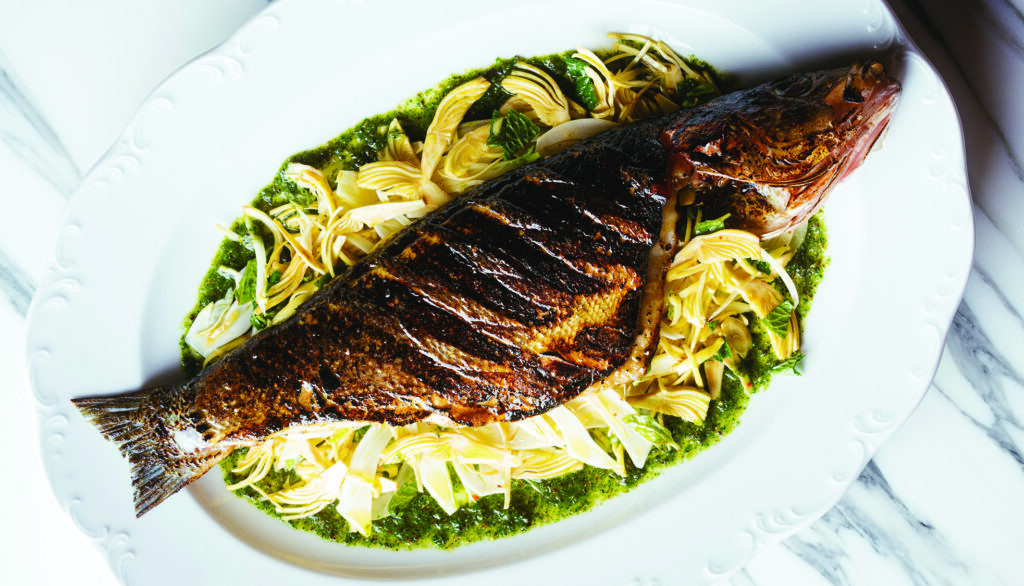
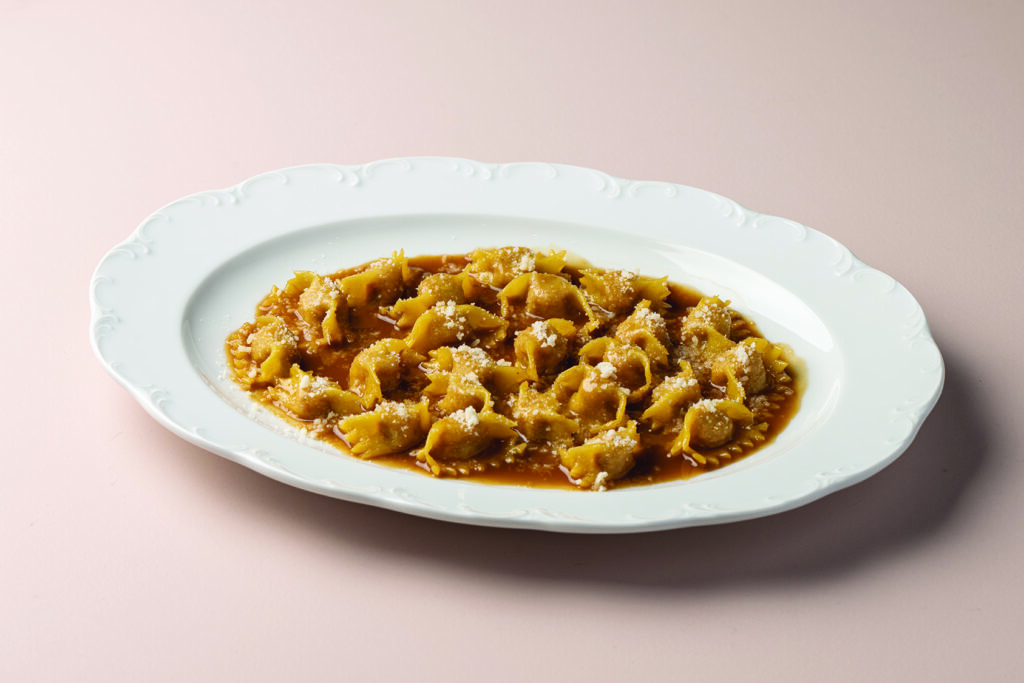
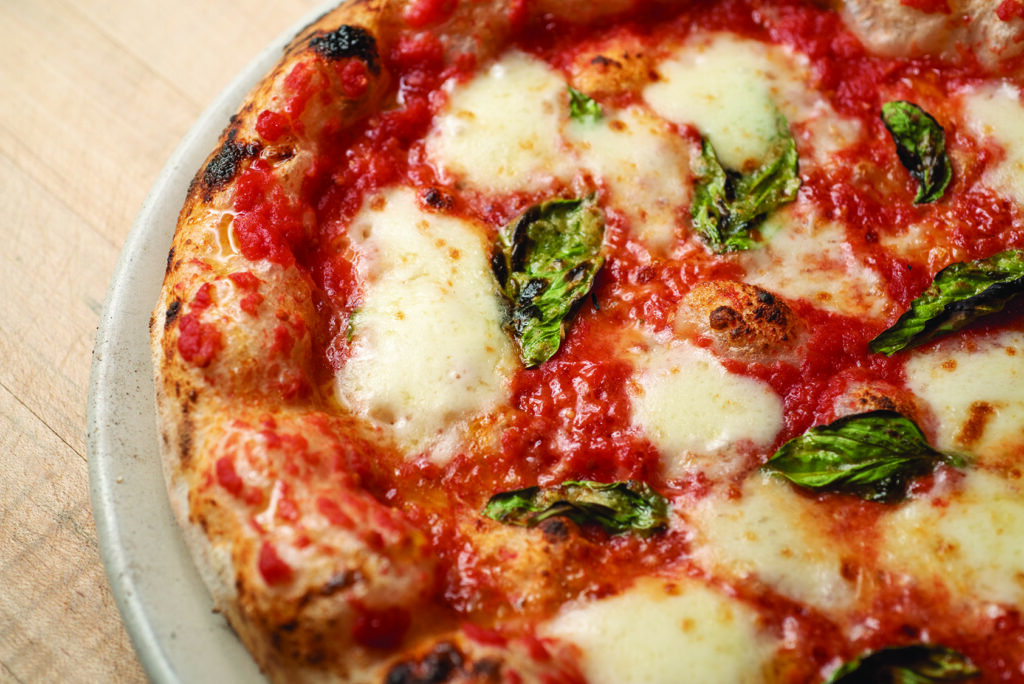
When he opened the Beverly Hills flagship 16 months ago, it was hailed as a crowning achievement to follow the venerable Felix Trattoria, which opened in Venice in 2017, and Mother Wolf, the opulent ode to Roman cuisine whose 2021 launch in Hollywood was an instant success.
Helming a triumvirate of wildly successful restaurants could easily fell an ordinary mortal. Funke, by contrast, has launched two new establishments in the past nine months, with another to soon follow. Mother Wolf Las Vegas opened at Fontainebleau Las Vegas in late 2023. Tre Dita debuted this spring at the St. Regis Hotel in Chicago’s Lakeshore East neighborhood. It quickly garnered top marks for its Tuscan cuisine (which, like Chicago, gravitates toward steak), as well as the sweeping views across a panel of 40-foot-tall windows.
By year’s end, a third Mother Wolf is set to open in Miami’s Design District.
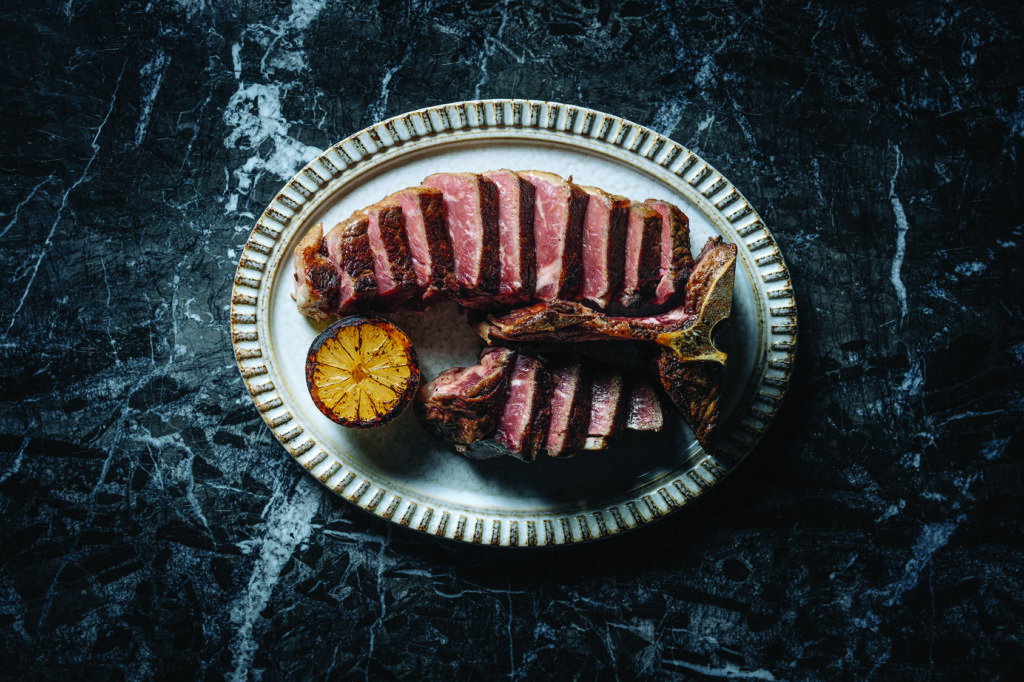
Funke, who has said in interviews that “100-hour weeks are easy, if you spread them out over seven days,” has an understandable reputation as an intensely driven perfectionist. (He once spent 20 days in Rome eating only cacio e pepe to hone his presentation.)
On the morning of our interview, Funke had already returned with his team from one of his three weekly visits to a local farmers’ market.
“We’re roughly 93-95% farmers’ market driven in all the restaurants. Nothing outside of 500 miles,” said Funke. He then proceeded to describe the bounty that morning in the throes of spring, from peas to artichokes and the last winter crop citrus, with the promise of morel and porcini mushrooms to come.
“It’s an incredible palette to paint from,” he noted.
Funke’s path to superstar culinary artist was by no means a predictable one. He and his four siblings grew up in Pacific Palisades. Their father, Alex, is an acclaimed special effects director of photography and three-time Oscar winner. Funke attributes his work ethic to his dad, though the cooking connection came somewhat by accident.
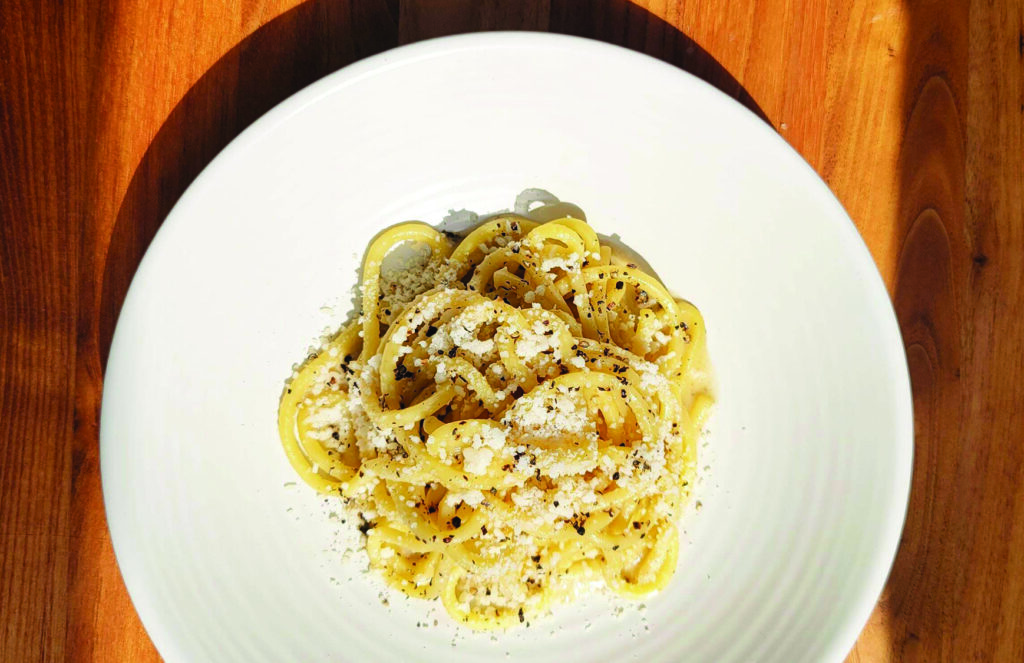
Finding himself at one point “lost” as a young man, Funke signed up for the Marine Corps. He was on the verge of reporting for boot camp when a friend’s mom suggested that he consider cooking school. Funke then made a decision that would change his life: to enroll in Le Cordon Bleu College of Culinary Arts in Pasadena.
The rest is culinary history.
From (the now defunct) Cordon Bleu, Funke went on to a seven-year stint with the Wolfgang Puck organization, first with the catering division and later the front lines at Spago where he worked his way to sous chef. An unfulfilling job followed at a hotel in Beverly Hills, after which he again decided to change course.
“I was trained classically in French technique at Le Cordon Bleu, worked for Wolfgang, cooked Asian and French quite a bit for seven years. And I obviously received extraordinary mentorship at Spago. I wouldn’t trade it for anything because the principles that I learned kind of define how I do a lot of things today,” he said.
Nonetheless, Funke was dissatisfied with cooking French food, which simply “did not resonate.” Once again, he decided to seek professional training, this time in Italy. He enrolled in a sfoglini (pasta maker) course taught by the acclaimed chef Alessandra Spisni at La Vecchia Scuola Bolognese in Bologna, Italy.
That time in Italy not only changed his trajectory as a chef but also as a human being.
“I immediately fell in love with the rhythm of Italian life. I was enamored with the way that they choose to live. What you do for a living does not define how you live or who you are as a person. You can sweep the streets and go home and make your own cheese and your own olive oil and live life culinarily to the fullest,” Funke explained.
He added that when he cooked French and Asian food, he was not aware of the background of a dish. Italy instilled in him a reverence for seasonality, for the land and for the history of things.
He came home from Bologna and worked for a while at Rustic Canyon in Santa Monica. His next step was a major one: opening his own place, Bucato in Culver City. Though a critical success and—ostensibly—a commercial one, the venture failed in 2015. In its wake, Funke faced personal bankruptcy and litigation from which he was later dismissed.
It was a low point in his life, but from great pain often springs great art.
In 2018, the media company Tastemade produced a feature-length, documentary film called “Funke,” which recounted the chef’s comeback from the Bucato implosion to launch Felix Trattoria. The film premiered at the Los Angeles Film Festival and is still available on streaming platforms.
“Funke” is not entirely flattering to its namesake, laying bare the resentment left in the wake of Bucato’s closing. But displays of sheer doggedness and belief in something bigger than oneself transmute Funke into a hero figure by film’s end. Adding to the mystique is a parallel storyline detailing the faith Funke manages to instill in Janet Zuccarini, the Canadian CEO and founder of Gusto 54 Restaurant Group. Zuccarini takes an odyssey of her own in the film, agonizing as she risks everything to back his Abbot Kinney venture that would become Felix Trattoria in 2017.
The gamble paid off.
Felix was Funke’s breakthrough, earning accolades that included Esquire’s “#1 Best New Restaurant in America” and Eater LA’s “Restaurant of the Year.” It was there that Funke first introduced the concept of the climate and humidity-controlled glass “pasta lab,” through which patrons could observe firsthand the crafting of handmade pasta. The idea sprang from Funke’s time in Bologna, where pasta makers plied their trade in front of storefront windows.
With its menu that breaks down dishes by region of Italy, Felix transformed the way Californians, and by extension, Americans, think of pasta. The trattoria also introduced now-classic Funke signatures, such as the soft-as-down “sfincione” focaccia, which even renowned chefs describe as unequaled.
In 2019, Chronicle Books published Funke’s “American Sfoglino” cookbook. Its pages unfold as a paean to the hand-rolled sfoglino (sheet) of pasta made the old-fashioned way, with a mattarello (specialized wooden rolling pin) and not a pasta machine. The book won the 2020 International Association of Culinary Professionals Award for Best Cookbook, Chefs and Restaurants and a James Beard Foundation Award for Best Photography in 2020.
Though he literally wrote the book on it, Funke chuckles at the notion that he is one of the world’s expert pasta makers.
“I’m a perpetual student. I have a talent for this, and I define talent as an intense love of something,” he said.
He motions to a young man rolling out a sfoglino behind the glass of the pasta lab behind us. Murano glass light fixtures designed to evoke Champagne bubbles reflect from above like so many fairy lights.
“I’ve made upwards of 35,000 [sheets of pasta], far beyond the 10,000 hours of mastery, if you will. It’s very much a meditative state that you can lose yourself in. It’s part martial art, part craft, part mysticism, part spiritualism, for me anyway. Pasta is not really a job for me. It’s not a vocation. I have to do this,” he explained.
The year after publishing “American Sfoglino,” Funke opened Mother Wolf in Hollywood. With a name that pays homage to Rome’s origin story and a menu inspired by La Cucina Romana, its star power was immediate. In the words of an early L.A. Times review in the spring of 2022, “Mother Wolf is a Hollywood production in every sense. Every night is a party, loud and posh and rowdy …” That same review added, “A new Funke restaurant will always involve some razzle-dazzle, but I doubt he’ll attempt anything of this size again soon. There’s no need. With Mother Wolf he’s pulled off serious cooking while pulling in Beyoncé and the Obamas … and the rest of us jockeying for reservations.”
Alas, the reviewer may have mistaken Funke for an ordinary mortal.
In fact, Funke at that moment was already deeply engaged with a bigger, bolder project in the heart of Beverly Hills. Westside Estate Agency (WEA) Co-Founder Kurt Rappaport was the financial Midas who would become Funke’s Medici.
After purchasing the building at 9388 South Santa Monica Blvd. in 2018 (for a reported $40 million), Rappaport worked with Dan Brunn Architecture to reimagine and transform both its exterior and interior to house WEA’s main office.
Rappaport wanted a significant restaurant for the space. He also knew that many in his circle of friends and business associates were Funke aficionados.
“I knew of Evan from Felix and the restaurant before that. My friend Steve Tisch and others would always rave about him. I heard through the grapevine that he was opening in Beverly Hills with Larry Gagosian on Camden next to the gallery,” Rappaport recalled.
He added, “I was depressed because I had bought the building. I had potential clients that were major restaurant operators but with concepts I didn’t really love and wouldn’t do anything to improve the community. We didn’t need another steakhouse or some strange concept that wouldn’t have a longstanding ability to succeed. I thought, ‘Oh my God. It would be so incredible to have Evan in my space,’ and ‘How did I not hear about it till it was too late?’”
Then, in March 2020, the world came to a screeching halt.
“All of us were locked in our houses and businesses were shuttering. I wanted to check in to see if the Funke-Gagosian project was still happening. Funny enough, I called a mutual friend who said that the deal was on hold. I said to myself, ‘You don’t put Evan Funke on hold. I want to meet with him.’”
The next day, Rappaport and Funke met.
“I told him, ‘The world will come back. Let’s build something that is exquisite.’ I told him that I believe in letting talented people do their thing. We will make it beautiful and special for the public. We worked on the restaurant for 3.5 years of planning and construction,” said Rappaport.
He noted that the city of Beverly Hills was a great help in bringing the project to life.
“I would say that [former Mayor] Lili Bosse was a real champion. I said to her, ‘I need the city’s help because Beverly Hills is going to lose another great concept to WeHo. The city was great and understood when I told them the restaurant will bring traffic that will help revenue in all parts of the city.”
When Funke opened, it was hailed not only as a career pinnacle for its namesake, but an architectural and design marvel, as well. Spanning three levels (including the most popular rooftop in the city) and 10,000 square feet, it is a showplace of Italian moderne. Interior design by Clint Nicholas incorporates striking stone surfaces, graceful, curved lines and touches that only an unlimited budget can provide, such as Loro Piana fabric on soundproofing panels. The net result is a space that encapsulates and propels forward the glamour of bygone eras. At the same time, the energy of the bustling venue on any given night conveys the sense that this corner of Beverly Hills is the center of the world.
To Funke, the magnificence of the setting helps achieve one of his main goals as a chef, which is to tell stories.
“So much of the restaurant industry is theater. It’s environmentally driven, as is Italian food culture. It’s where you are, it’s who you’re with, it’s what you’re eating that informs the experience. And every dish that I make in all the restaurants has some form of storytelling connected to it. The history of Italy, the history of pasta is very much interwoven into the history of the country. And there are very beautiful themes that inform this space and all the spaces,” he said.
This spring Funke manned the pizza oven in his third year catering Vanity Fair’s post-Oscars party for Hollywood’s biggest night. But he always returns to pasta, which he describes as “the food of the people” or more aptly, the food of the nonnas who have shared their craft with him.
“[E]very dish that I make in all the restaurants has some form of storytelling connected to it.”
Many of those nonnas are immortalized now, their names on the Funke menu alongside regional specialties now served nightly to a rapturous clientele. There is Agnolotti dal Plin from “Gemma,” tagliatelle from Bologna, with credit to the Maestra Alessandra and, of course, the strangulet, attributed to Cristina, his teacher from the ancient village in Italy.
Funke, said Rappaport, is the highest grossing restaurant in the city.
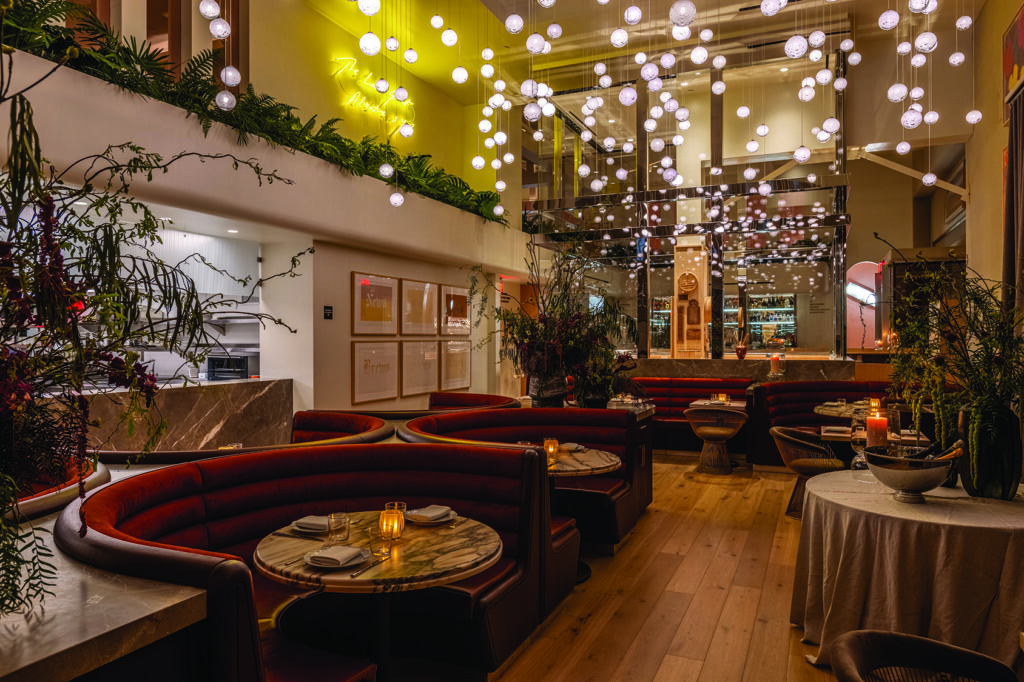
“People love it, and everyone compliments me on the service, on the staff. The experience starts when you walk in the door. Everyone who works there is a passionate foodie, and Evan is the hardest working chef in America. He is never satisfied. Most people look at and are happy with 99 percent. He’s looking at the one percent and wonders how we can elevate and provide a better experience,” Rappaport added.
At the moment, Funke is also looking at other potential ventures, including an Amazon project with chef-restaurateur Giada DeLaurentiis.
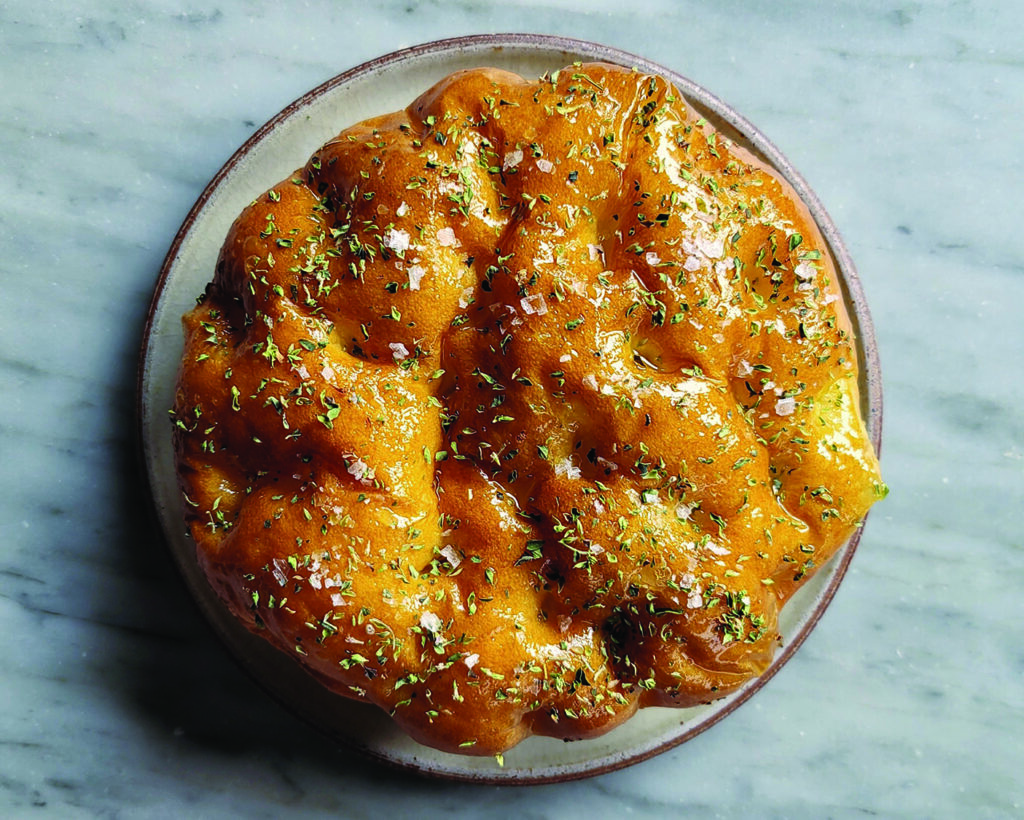
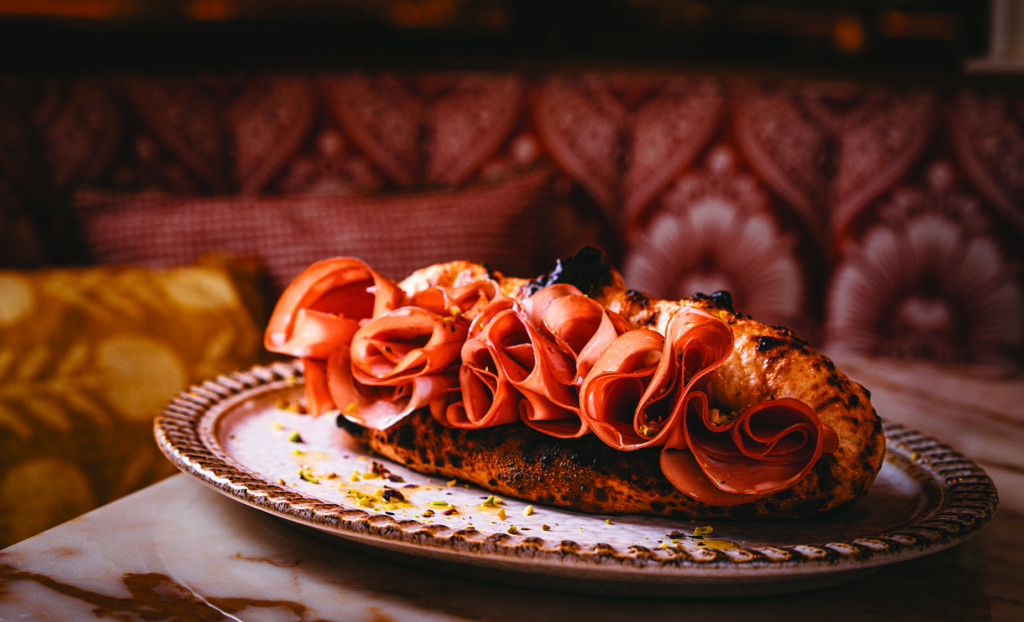
“That is still in the works. But television always takes a lot longer than people think, and I want to make sure that whatever I do, no matter if it’s a restaurant or if it’s a TV show or it’s a book or a project, I don’t want to be a talking head. I want it to be meaningful.”
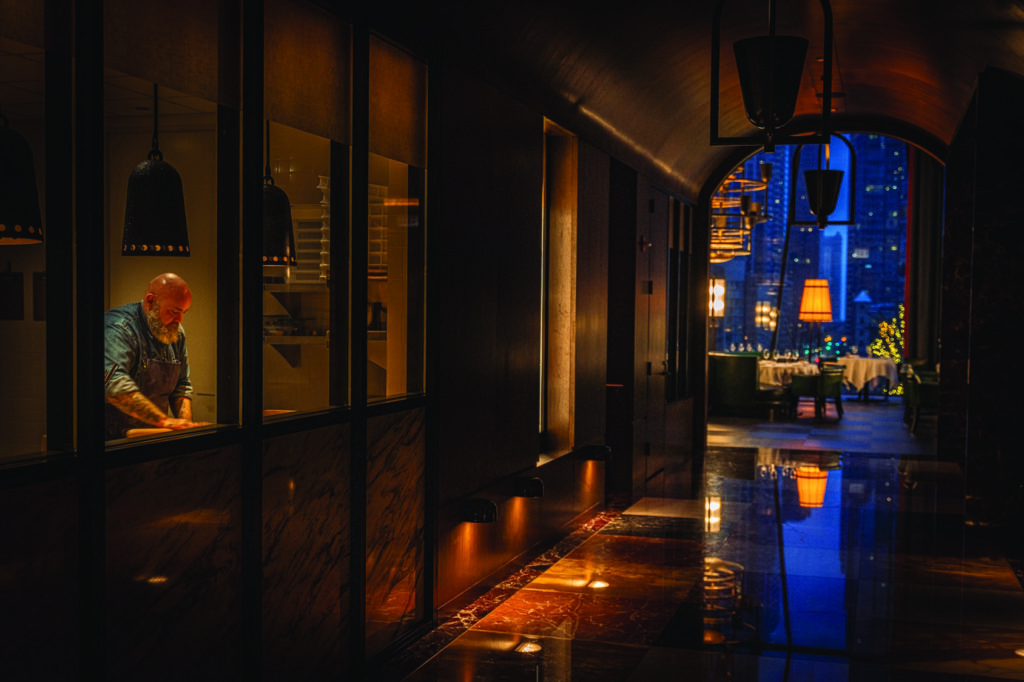
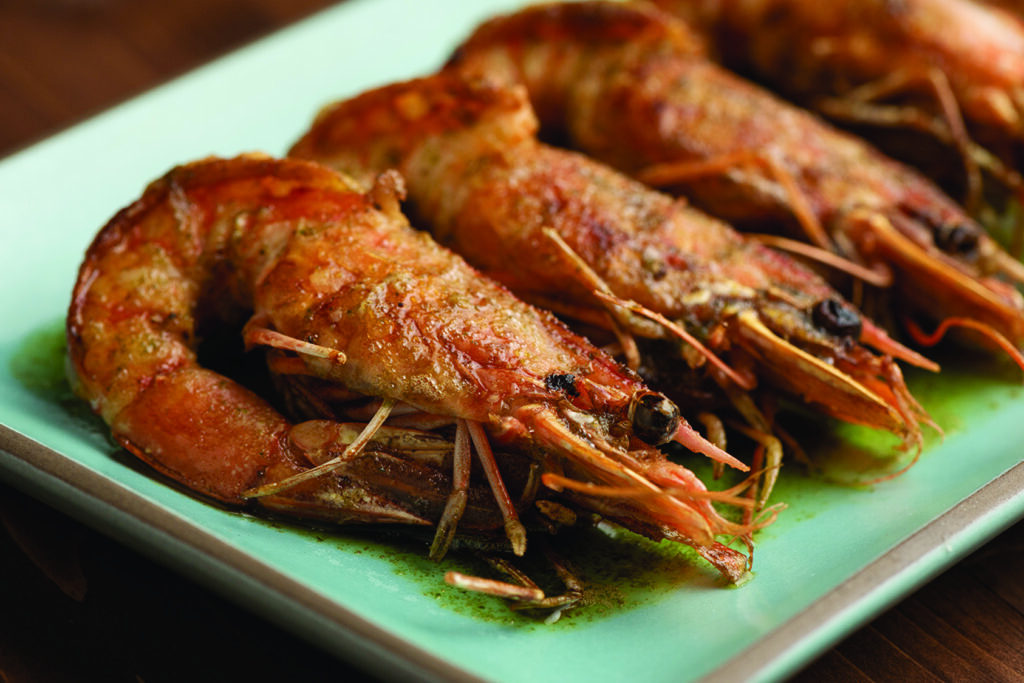

What about meaningful time off, I ask?
“I take about half a day off a week on Sunday. I cook a little, my wife [Grace] cooks a little. If I go out, I like to go to small Thai places, little Vietnamese places. But I leave pasta for Italy,” he replied.
Thus far, Funke has been to 17 of Italy’s 20 provinces and tries to visit between two and four times a year to, as he puts it, “reset the culinary North Star” and build relationships.
“I work every hour that is available in the day, and I’m very motivated to do as much as I possibly can with my life. And I just so happened to choose pasta and restaurants as my medium to build a legacy that I can leave behind. The mentorship that I leave behind will be the legacy. I just think I have a responsibility to do it, and I’m privileged to do it. I’m not having children, and this is what I’m going to leave behind,” said Funke.
He added, “L.A. is an extraordinary place to cook.”



